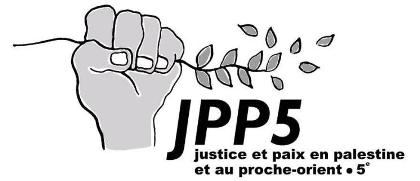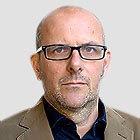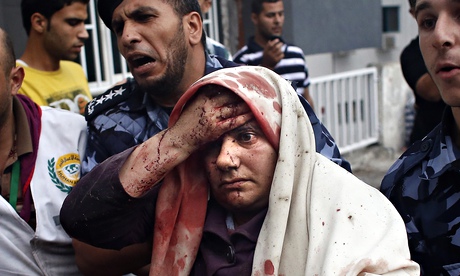Al-Beltaji Street, off the main road in Shujai'iya, is a scene of utter devastation – the site of Israel's bloodiest assault in almost two weeks of fighting in the coastal strip.
An ambulance sat on shot-out tyres, shrapnel punched through its sides. A charred car lay flattened as if by a giant hand. Smoke rose from one end of the street in a dark billowing curtain.
Fallen trees, tangled electricity cables and drifts of rubble covered the road, smashed, chopped and torn apart by Israeli shells and bombs that slammed into this Gaza City district at a rate of one every five seconds on Saturday night and the early hours of Sunday.
A body was carried out of a ruined house, then a second and a third – seven in total from buildings within a hundred metres of each other during a brief agreed lull in the fighting to evacuate the dead and wounded. A little further along, bodies lay in the street where they had fallen, mostly scorched figures – one still in a yellow dressing gown – others missing limbs.
"Come out it's safe," rescue officials shouted as they picked their way along the street.
At least 67 people – some fighters but many civilians – were killed in a night of intense violence in Shujai'iya that has been described by the Palestinian president, Mahmoud Abbas, as a massacre. Hundreds more were injured.
At the far end of the street, a family emerged running, led by a man cradling a child. Slowed at times by the rubble, their faces, stunned by fear, were deaf to questions, focused only on reaching the road leading to the relative safety of Gaza's City centre.
Raed Zaqtout fled at 10am on Sunday morning, but returned with his brother in the midst of a two-hour humanitarian ceasefire organised by the Red Cross to retrieve the dead and the injured. The ceasefire only lasted an hour.
"We stayed in the house while they were shelling. Two other families came to shelter with us. In the morning we decided to escape along that lane," he said, pointing to an opening opposite. "Even then some of us were injured, thankfully only lightly, by shrapnel."
Both sides have accused the other of breaking the ceasefire. An Israeli military spokesman conceded that during the brief initial pause in fire, Israeli forces had continued firing in an adjacent neighbourhood – an area, he claimed, that was not covered by the truce. Nonetheless, it is that Israeli fire that appeared to have hastened the Hamas fighters' return to hostilities.
As the regular thud of explosions resumed, three Palestinian fighters – carrying AK-47s, and with their faces wrapped in scarves – jogged along the street. Other militants were seen sheltering in the buildings. Shujai'iya residents said the heavy shelling began around midnight as tanks and soldiers reached the edge of their neighbourhood – a fierce gun battle followed.
In the first hours of shelling, it was too dangerous for ambulances to approach – residents were faced with a choice: stay and risk being killed while sheltering at home, or make a run for it and risk being caught in the crossfire.
Those who decided to flee started moving at dawn, when Shujai'iya was still under heavy Israeli tank and mortar fire. They hurried past the corpses in the street, some carried their frightened children, most with only the clothes they had escaped in – several barefoot.
Among the 30,000 who fled were Sabreen Hattad, 34, and her three children.
"The Israeli shells were hitting the house. We stayed the night because we were so scared but at about 6am, we decided to escape.
"But where are we supposed to go? The ambulances could not enter and so we ran under shell fire."
Three men rushed past, clutching bedding. Asked what they had seen they replied only: "Death and horror." The sound of small-arms fire rattled from the direction they had come.
Many of those who fled Shujai'iya headed for Gaza City's Shifa hospital, which was engulfed in chaos. Ambulances that had finally and briefly been given access to the site of the carnage sped in steadily, ferrying the dead – among them a local TV cameraman, Khaled Hamad, who was killed during the overnight offensive alongside a paramedic.
At the morgue, dozens crowded the entrance demanding to be let in to look for missing relatives – and too often found them.
Inside the hospital, the staff put mattresses on floors to accommodate the injured, while other patients were evacuated. Nurses carefully placed Aish Ijla, 38, on a mattress in a corridor. His leg had been broken by shrapnel.
"When the shells started we couldn't leave the house – 30 of us. The shells were hitting the upper floor so we all moved downstairs. Then the shrapnel started hitting our door.
"It became quiet for a moment and we decided we should run. But as we were on the road a shell landed near me, breaking my leg. I told my family to go on with out me. I carried on – stopping, then limping. Two hours later, an ambulance reached me ."
Arye Shalicar, a spokesman for the Israeli military, told the Guardian that Shujai'iya was a "frontline base" for Hamas fighters: "140 rockets have been launched from there in the last week and a half alone. And [there are] not only rockets but tunnels.
"We asked the population to evacuate to other neighbourhoods. If we were not bothered about civilians we would have just bombed from the air rather than sending in tanks and soldiers, dozens of whom have been wounded."
Hamas fighters may be based in Shujai'iya and rockets fired from its streets, but it is also the most densely populated residential neighbourhood in Gaza City. Many homes have been targeted.
The injured were still being brought to Shifa hospital on Sunday evening. Two young girls arrived, one with a bleeding head wound, another with her teeth smashed out, covered in dust. Another man had lost most of his face.
Naser Tattar, the hospital's director, said at least 17 children, 14 women and four elderly were among the 67 killed in the Israeli assault. About 400 more were wounded. The medical director, Dr Mohammad El Ron, stood in the casualty department, exhausted: "Most of the casualties brought in so far have been dead."





